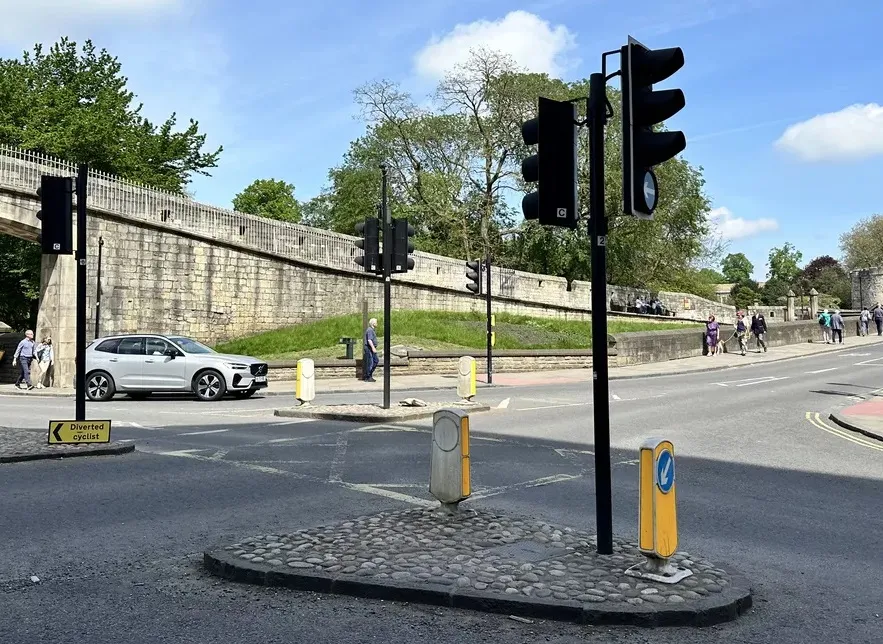Microsimulation traffic modelling has supported a further roll-out of SCOOT adaptive traffic signal control in London, demonstrating a 13% reduction in travel delays. Development of a cost-effective traffic modelling system has led to a further major roll-out of SCOOT adaptive traffic management technology in London, says traffic and software programme director Gavin Jackman of UK transport consultancy TRL. The roll-out of SCOOT at 600 additional intersections, now at its midpoint, is a central plank in the
January 14, 2013
Read time: 3 mins

Microsimulation traffic modelling has supported a further roll-out of SCOOT adaptive traffic signal control in London, demonstrating a 13% reduction in travel delays.
Development of a cost-effective traffic modelling system has led to a further major roll-out of SCOOT adaptive traffic management technology in London, says traffic and software programme director Gavin Jackman of UK transport consultancyThe roll-out of SCOOT at 600 additional intersections, now at its midpoint, is a central plank in the Mayor of London’s policy objective of smoothing traffic flows to meet
Low cost evaluation
But TfL first wanted cost-effective quantification of the benefits. “Such confirmation typically emerges from local evidence. But the high cost of on-street trials can be a deterrent to the necessary research,” Jackman told an IBEC (International Benefits, Evaluation & Costs) working group session held at the October 2012Cost saving:
• Modelling around 15% of cost of on-street trials.
Benefits:
• Average 12.84% saving in travel time delays.
• Average 04.6% saving in number of vehicle stops.Experience suggested that modelling was likely to come out at around 15% of the on-street cost. To meet the challenge, TRL developed a model with an urban traffic control
Results validated
Over a typical five-hour weekday morning peak period, the model predicted savings in both locations of 100l of fuel consumed and 236kg of CO2 emitted. Vehicle stops and delays both reduced with SCOOT being activated. The results are shown in Tables 01 and 02. The emissions results are as in Tables 03 and 04. Table 01: Base flow SCOOT benefits
| Reduction in delays % | Reduction in stops % | |
|---|---|---|
| Victoria | 11-16 | 10-17 |
| Tavistock Place | 08-09 | 06-25 |
| (all scenarios) |
Table 02: Incident flow SCOOT benefits
| Reduction in delays % | Reduction in stops % | |
|---|---|---|
| Victoria | 12 | 10 |
| Tavistock Place | 14 | 8 |
Table 03: Base flow emissions reductions
| Reduction in NOx% | Reduction in PM% | Reduction in Carbon% | |
|---|---|---|---|
| Victoria | 8 | 5 | 6 |
| Tavistock Place | 3 | 1 | 3 |
Table 04: Incident flow emissions reductions
| Reduction in NOx% | Reduction in PM% | Reduction in Carbon% | |
|---|---|---|---|
| Victoria | 9 | 6 | 7 |
| Tavistock Place | 7 | 3 | 8 |
The models predicted annual user benefits, per junction, of between £89,200 and £107,100, with an overall user benefit in the first year, per node, of £90,000 (2009 value of time) excluding vehicle operating costs and the social cost of carbon reductions.
The modelling results have been validated and show that overall, across the 600 junctions, SCOOT is delivering an average 12.84% reduction in delays and 4.6% reduction in the number of times that vehicles have to stop as they travel through the network.
SCOOT (Split Cycle Offset Optimisation Technique), developed by TRL and now jointly owned by TRL, Peek and








